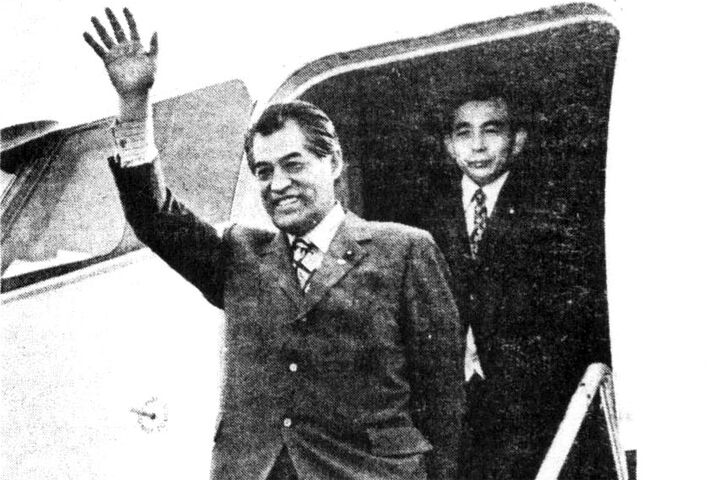
Herbert W. Armstrong Walked Through Open Doors to Deliver the Gospel to Latin America
During August 1974, Herbert W. Armstrong, Ambassador International Cultural Foundation (aicf) officials and members of the Japanese Diet completed a seven-nation tour through Latin America. Mr. Armstrong organized for the group to travel aboard the Gulfstream ii aircraft that the aicf owned and used as global transport for this ambassador for world peace without portfolio. The Gulfstream ii allowed carefully scheduled air travel to expeditiously reduce the trip from what could have been around six weeks by commercial air travel to just two weeks.
After rendezvousing in Hawaii and boarding the Gii, Japanese officials set about opening doors for Mr. Armstrong to preach Christ’s gospel message, per Matthew 24:14, in Mexico, Panama, Guatemala, Peru, Ecuador, Brazil and the Dominican Republic. A highlight came while in Brazil when the combined delegation greeted the president and officials from government departments. Mr. Armstrong and aicf representatives “met chiefs of protocol in the countries visited” to confirm “future appointments will be set up with their presidents and any other government leaders that Ambassador College wishes to contact” (Worldwide News, Sept. 2, 1974).
Head of the Japanese delegation was former minister and Diet member Bunsei Sato. He was one of several international representatives who attended the opening of Ambassador Auditorium and had also visited all three campuses of Ambassador College, in Pasadena, Big Sandy, Texas, and Bricket Wood in England.
During a dinner conducted in Washington, d.c, following the two-week goodwill tour of Latin American countries, representatives of the Japanese delegation thanked Mr. Armstrong for the aid he had provided them on this trip. aicf officials noted, “They were extremely grateful because they know they would be unable to make the kind of effort they did in such a limited period of time without the utilization of the aircraft and the crew and the help of Mr. Armstrong ….” Japanese Prime Minister Tanaka reportedly “extended his gratitude” to the much-revered “ambassador for world peace without portfolio,” who affectionately referred to 10 key government officials as “his Japanese sons” (ibid).
Two years earlier, Mr. Armstrong related an incident where Prime Minister Eisaku Sato was visiting California to see President Nixon and called for a personal meeting with Mr. Armstrong. Unable to attend because of illness, Mr. Armstrong sent two Ambassador College executives in his stead. Mr. Sato requested during that meeting “that we fly two top members of the Japanese Diet (their Congress) and eight representatives of the Japanese press to our Texas campus for a couple of days, which we did. They had ‘the time of their lives’” (Herbert W. Armstrong, co-worker letter, Feb. 28, 1972).
The Japanese government officials had been instrumental the previous January in opening doors for Mr. Armstrong to reach the leaders of Egypt and other Arab countries with the hope-filled message of the coming government of God.
Are there still minds in Japan and Latin America that yet remember that witness? When troubles impact their nations in their increasingly destabilized hemispheres, will they recall that white-haired patriarch who came among them preaching the good news of the coming Kingdom of God? Read Herbert W. Armstrong’s autobiography to learn more about this unique ambassador for world peace.
